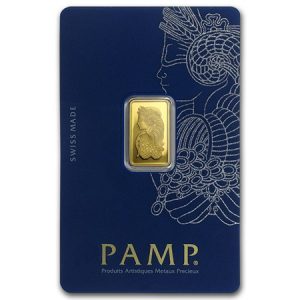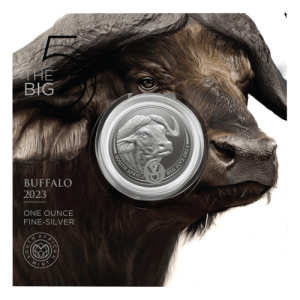The world is full of precious metals. Some are rarer than others and have higher value than other metals, but they’re all valuable. This post will go over ten of the world’s most precious metals, their uses, and why they’re so important.
What is a Precious Metal?
A precious metal is a natural element that has been processed to have a relatively high monetary value. Precious metals are mostly used for investment and have different industrial, commercial, and investment uses. There are many precious metals in the world, but the most common are gold, silver, platinum, palladium, and rhodium.
1. Rhodium
- Rhodium is a rare and precious metal. It’s a member of the platinum group, which includes rhodium, iridium, and osmium. It’s also found in meteorites and asteroids.
- Rhodium has a melting point of 1970 °C. This makes it very hard to work with—and therefore it’s so expensive! Due to its exceptional resistance to heat and corrosion, rhodium is a precious metal that is primarily mined in Russia, South Africa, and Canada.
- Rhodium-plated jewellery is more resilient and shinier than jewellery made of other metals. The lustre of rhodium plating is maintained, and it does not scratch, dent, or corrode. Rhodium is currently one of the quietest hot commodities.
- It is a silver-coloured metal that is primarily utilised for its reflective qualities but is also utilised in several other industrial sectors, including the automotive sector.
2. Platinum
- Platinum is a precious metal that has been used for centuries to make jewellery. It’s also one of the most valuable metals in the world, making it ideal for use in luxury items such as watches, rings, and cuff links.
- Platinum is a chemical element with the symbol Pt and atomic number 78. Platinum is a dense, malleable, ductile, highly unreactive transition metal having high resistance to corrosion and wear but is weakly attacked by halogens such as chlorine or bromine; therefore, it has historically been used in alloys with other elements (e.g., copper-platinum alloys).
- Platinum is also found in many industrial applications. Most notably, it is used in automobiles as an additive to improve engine performance and fuel efficiency. This means that the demand for platinum is directly related to automobiles.
- It is one of the world’s heaviest metals and is made in Russia, South Africa, and Canada.
- Platinum’s high level of resistance makes it a popular material for use in many weapons, aircraft, and dental equipment.
3. Gold
- Gold is a soft, dense, malleable, and ductile metal. It has a bright yellow colour and luster.
- Gold is extremely resistant to corrosion because it does not react with many other elements in the environment including oxygen or water molecules. This makes it an excellent choice for jewellery because it will not tarnish over time as other metals do when exposed to air or moisture from sweat or rainwater (e.g., silver).
- Gold is one of the most valuable metals in the world and maintains its value even when there is political and economic unrest.
- In almost every society, including today’s, gold has been used as money as a representation of wealth, power, and prestige.
- South Africa, China, the United States, Australia, and Russia are the most prevalent nations from which it is obtained.
4. Ruthenium
- Ruthenium is a rare element that has an atomic number of 44.
- Ruthenium, a relative of platinum, maintains many of the best qualities of the metal family, and because of its resistance to the elements, it is frequently used as a component of platinum alloys.
- It is primarily utilised in electronics. It’s also used in some jewellery as an alloy with platinum.
- Russia, North and South America, and Canada are largest producers of Ruthenium
5. Iridium
- Iridium is a chemical element with the symbol Ir and atomic number 77. It has been found in meteors, but its abundance on earth is very low—only about 0.000001% by weight (for comparison, platinum’s concentration in the Earth’s crust is 1%).
- Iridium is the rarest and most expensive of all the naturally occurring elements. It occurs naturally as a component of certain types of meteorites known as irons; much like gold, nickel, and other metals, it will react with oxygen at ordinary temperatures to form an oxide layer that makes up part of its composition.
- white-to-silver transition metal Iridium has a ridiculously high melting point and a gleaming white appearance.
- It is one of the densest elements on earth and is only found in South Africa. It has greatly advanced technology in the fields of electronics, transportation, and medicine.
6. Osmium
- Osmium is a chemical element and the densest naturally occurring element. It has a density of 22.18 g/cm3.
- It is employed in the production of electrical contacts and nibs for fountain pens.
- Russia’s as well as parts of North and South America contain it.
7. Rhenium
- Rhenium is a silvery-white, hard, dense, ductile, and malleable transition metal.
- The element gets its name from the Latin word ‘rhesus’ meaning river.
- Rhenium’s atomic number is 75 and its atomic weight is 186.207 u.
- It is frequently a by-product of the copper mining process and is used on electronic casings and filaments.
- Russia, North and South America, and Canada are largest producers of Ruthenium
8. Silver
- Of all known metals, silver has the highest electrical conductivity, thermal conductivity, and reflectivity.
- Jewellery, photography, dentistry, batteries, coinage, and circuitry are just a few of its many applications. Additionally, it has a wide range of technological uses, including odour control and stopping the spread of bacteria.
- It is present in the crust of the earth as an alloy with gold and other priceless metals, as well as in minerals like argentite and chlorargyrite. On the other hand, most of the the world’s silver is produced as a by-product of the refining of gold, lead, copper, and zinc.
-
Scandium
- Scandium was discovered in Scandinavia in 1879 through spectral analysis of the mineral’s euxenite and gadolinite.
- Its Scandinavian name is attributed to a Swedish scientist by the name of Lars Nilsson.
- It has a metallic silvery-white hue and has always been categorised as a rare-earth element.
10. Indium
- Finally, we reach Indium, it is a soft, silvery-white with the symbol In and atomic number 49. It was first discovered by the French chemist Charles Hatchett in 1861.
- Due to its excellent conductivity, electronic manufacturers frequently use it. Indium is also used as a coating for aeroplane engines.
- Because of the indigo blue line in its spectrum, it was given the name indium.
And that’s all for now! I hope you have enjoyed reading this article and found it useful.

 Hi,
Hi,











